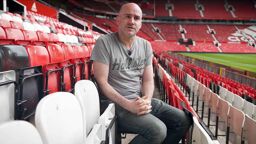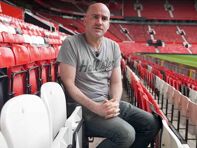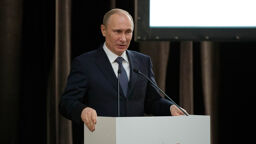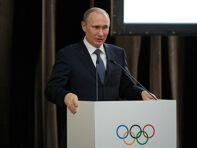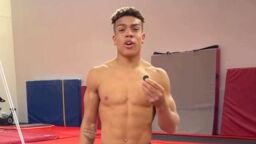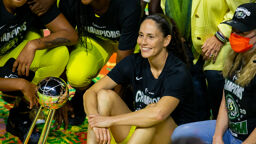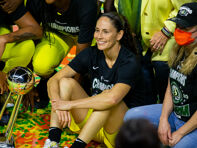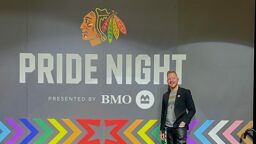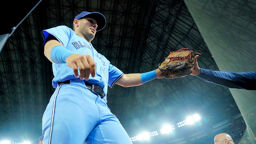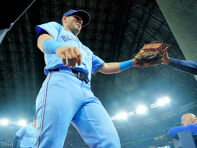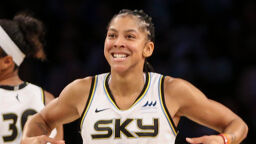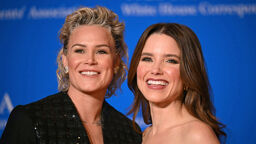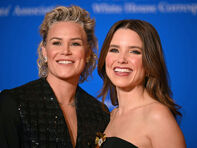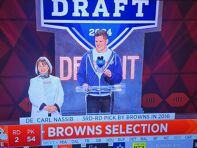The most telling sign of the lack of out gay men in professional tennis is that the only player wearing any rainbow apparel this summer was a straight guy who had to apologize for using gay slurs during the Olympics.
As the U.S. Open starts its two-week run in New York, I feel compelled to rehash this depressing statistic: There will once again be no openly gay male players at one of the sport’s premier events.
“To be honest, I’m somewhat surprised that there still hasn’t been an out active ATP Tour level player,” said Nick Lee, a former college tennis player at Vassar who is openly gay.
“I do think that former professional tennis player Brian Vahaly coming out was a significant step in the right direction,” Lee said. “Many top ranked players on the men’s side, including Roger Federer and Andy Murray, responded very positively to Vahaly coming out and said that they would welcome an openly queer man to the tour.
“I think it would be incredible if more former ATP players who are queer came out, especially someone who was a high-profile player, building a bigger support network for an active professional men’s tennis player to feel comfortable coming out.”
The number of out pro women on the tour isn’t a whole lot better — Alison van Uytvanck, Greet Minnen and Sam Stosur will play singles and Demi Schuurs will play doubles at the U.S. Open — but there have been out female players throughout history, including legends like Billie Jean King (whose name adorns the stadium where the U.S. Open is held) and Martina Navratilova.
The absence of out male pro tennis players is noteworthy in a summer that saw the first gay NFL player and gay NHL prospect come out and a record number of out LGBTQ Olympians, including the most men ever. These developments make men’s pro tennis look like it’s stuck in a prehistoric age.
Brian Bradley, who is gay and played tennis for Catholic University in Washington, D.C., focused on the individual nature of the sport when telling Outsports why he thinks gay pro tennis players stay closeted.
“There are no out gay players on the ATP tour because most players don’t pick up a racket in hopes to be a role model for an entire marginalized community,” Bradley said. “It takes a special personality to both thrive in a professional sport AND live authentically as a gay man. Tennis is an individual sport. For so long gayness has been attributed to weakness — this can alienate a player from coming out.”
“What happens if you’re the the FIRST out gay player?” Bradley asked.
“More attention.
“More distractions.
“Possible backlash from sponsorships.
“You become a hero for so many people. Thus, adding more pressure. You are the first, so people want to see you succeed.
“The coming out process is so nuanced, and I can imagine the intricacies that come with being gay and playing a professional sport. That closeted player may not have signed up to be the first gay player. He probably signed up just to play tennis — and he may not be capable (or interested) in being the spotlight for queer tennis.
“To be the first takes extreme bravery outside the parameters of succeeding as a world class athlete.”
In contrast to the pros, there are out players at the collegiate level and one of them, John Speicher, wrote in his coming out story for Outsports earlier this year that one of his reasons for going public was to encourage others to come out.
“I’ve seen other stories of college tennis players on Outsports, and I think it’s important to increase the representation so that people at the upper levels of the sport will be able to come out and feel supported,” Speicher wrote.
Speicher echoed Bradley in asserting that tennis being a solo sport has an impact on players coming out.
“The individual nature of professional tennis makes it particularly challenging for players to come out,” he said. “No one wants to be vulnerable and feel like they’re displaying any sort of weakness to the competition and you have no teammates to confide in.”
At a symposium on LGBTQ players held in conjunction with the U.S. Open two years ago, Van Uytvanck said she believed “the world sees women coming out in tennis as more normal than men.”
Van Uytvanck is correct. An out female pro tennis player gets a shrug, while a man coming out would be a big story. But the fear that an out player would be hounded by the media has been demolished by how quickly the Carl Nassib story faded after the Las Vegas Raiders defensive lineman came out as gay in June. By training camp in July, the media had moved on.
Lee does see potential for change and it revolves around young people.
“LGBTQ+ youth are at risk of dropping or burning out of sports due to not feeling welcomed based on their sexual or gender orientation,” Lee said. “Consequently, I think that grassroots efforts at the junior level that build welcoming and inclusive environments in competitive youth sports could lead to more potential for their being an openly queer man on the ATP tour in the future.”
I appreciate the insights of players like Lee, Bradley and Speicher and think their theories on why players stay closeted are spot on. Yet, I am convinced that a man coming out would be overwhelmingly accepted by the people who run the sport, fellow players, fans and the media.
I think “gay male pro tennis player comes out” would be a story that quickly fades as an obsession in a culture where “breaking news” gets old really fast. We need someone to put the theory to the test, and that doesn’t appear to be happening any time soon.









